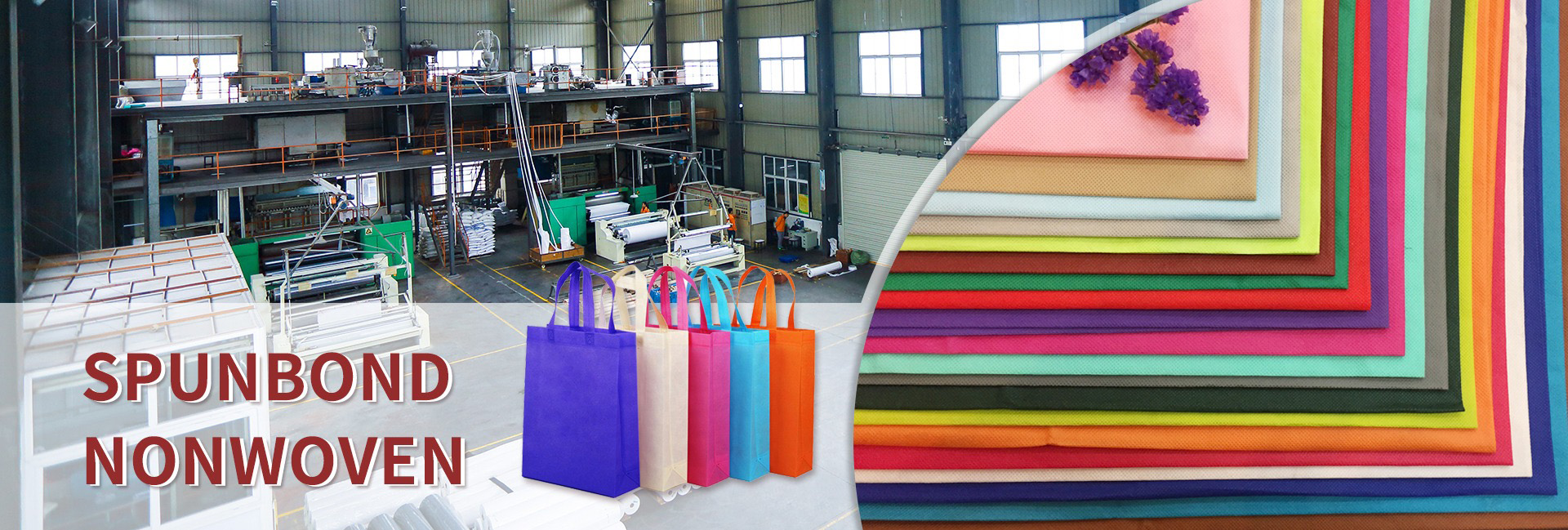The laminating process is an efficient technique that directly combines plastic melt with non-woven fabric to form a composite film. The specific process can be divided into five core steps: pretreatment, extrusion melting, laminating, cooling and shaping, and post-treatment. Each step has a critical impact on the quality of the final product. The following is a detailed disassembly:
Pre treatment of nonwoven fabric
Before laminating, the non-woven fabric needs to be pre treated to ensure the composite effect:
Tension control: The non-woven fabric is smoothly unfolded through a unwinding device, and the tension is adjusted to keep the material flat and avoid wrinkles (if the non-woven fabric is loose or unevenly stretched, it will cause uneven film coverage in the future).
Surface cleaning: Some production lines will be equipped with dust rollers or static eliminators to remove dust, fluff, or static electricity from the surface of non-woven fabrics, preventing impurities from affecting the composite strength.
Preheating (optional): For non-woven fabrics with large thickness or hard texture, they can be heated appropriately by a preheating roller (usually at a temperature of ≤ 60 ℃) to enhance their surface activity and facilitate better bonding with plastic melt.
Plastic extrusion melting
This step is to convert plastic raw materials into a sprayable melt:
Raw material preparation: Commonly used plastics are PE (polyethylene) and PP (polypropylene), and functional additives such as antioxidants, color masterbatch, anti slip agents, etc. can also be added according to needs. After mixing evenly, they are put into the extruder hopper.
Melting plasticization: Plastic particles are gradually melted into a uniform melt in the extruder screw through external heating (barrel temperature setting: PE about 150-200 ℃, PP about 180-230 ℃) and shear friction heat from screw rotation, while removing moisture and bubbles from the raw material.
Melt filtration: The melt passes through a filter screen (usually a multi-layer metal mesh) at the head of the extruder to filter out incompletely melted particles or impurities, ensuring the purity of the melt and avoiding spots or damage to the composite film.
Composite coating
Spread molten plastic evenly on the surface of non-woven fabric:
Mold head distribution: The purified melt enters the T-shaped mold head (also known as the coating mold head), and the flow channel design inside the mold head will evenly distribute the melt throughout the width direction (adjustable according to the width of the non-woven fabric, commonly 1-5 meters wide), forming a continuous melt film.
Precise coating: The melt is extruded from the lip of the die under a certain pressure, forming a liquid film and “coating” on the uniformly moving non-woven fabric surface below. At this time, the temperature of the plastic melt (PE about 180-200 ℃, PP about 200-220 ℃) will slightly soften the non-woven fabric surface, promoting the fusion between the two molecules.
Cooling and shaping
Quickly solidify the melt to form a stable composite structure:
Cooling roller pressing: The non-woven fabric coated with molten material immediately enters the cooling system, usually through 1-3 chrome plated cooling rollers (with extremely smooth surfaces) that are internally cooled to tightly press the non-woven fabric against the molten material.
The temperature of the cooling roller is controlled at 20-40 ℃, and the melt temperature is rapidly reduced through heat exchange to solidify it from a viscous state into a solid film.
Pressure and cooling speed need to be accurately matched: insufficient pressure can lead to weak bonding between the film and non-woven fabric; Slow cooling may cause the film to shrink and deform, while too fast to adhere can easily generate bubbles.
Thickness control: By adjusting the lip gap of the die head, the melt flow rate of the extruder, and the operating speed of the non-woven fabric, the film thickness can be precisely controlled (conventional range 0.01~0.1mm, special requirements can reach 0.2mm or more).
Post processing and roll up
Trimming and trimming: The composite material is processed by a trimming machine to remove irregular edges (usually 5-10mm wide) on both sides, ensuring that the product width is neat.
Quality inspection: Check the flatness, presence of bubbles, leakage, and uniformity of film thickness of the composite film through online inspection equipment (such as visual inspection instrument). Non conforming products will be marked or automatically removed.
Roll up storage: Qualified composite films are rolled into large rolls (with a diameter of up to 1-2 meters) by a winding machine, cut into different lengths of rolls or sheets according to demand, and finally packaged and stored.
Core points of the process
Temperature coordination: The extrusion temperature, non-woven preheating temperature, and cooling roller temperature must be strictly matched, otherwise delamination, wrinkling, or film brittleness may occur.
Speed matching: The operating speed of non-woven fabric (usually 50-300 meters/minute) needs to be synchronized with the melt output of the extruder to ensure stable film thickness.
Equipment accuracy: The flow channel design of the mold head and the surface smoothness of the cooling roller directly affect the uniformity of the film and the appearance of the composite film.
This “one-step molding” process has become one of the most widely used technologies in non-woven fabric lamination due to its high efficiency and low cost, especially suitable for large-scale production of waterproof and moisture-proof products.
Dongguan Liansheng Non woven Technology Co., Ltd. was established in May 2020. It is a large-scale non-woven fabric production enterprise integrating research and development, production, and sales. It can produce various colors of PP spunbond non-woven fabrics with a width of less than 3.2 meters from 9 grams to 300 grams.
Post time: Jul-17-2025

